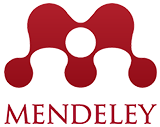Optimizing Counseling Guidance Facilities and Infrastructure to Support Students' Personal Growth
Abstract
Keywords
Full Text:
PDFReferences
American Counseling Association. (2014). ACA code of ethics. https://www.counseling.org/resources/aca-code-of-ethics.pdf
American School Counselor Association. (2019). The ASCA national model: A framework for school counseling programs (4th ed.).
Cook, E. P., Heppner, M. J., & O'Brien, K. M. (2002). Career development of women of color and White women: Assumptions, conceptualization, and interventions from an ecological perspective. The Career Development Quarterly, 50(4), 291–305. https://doi.org/10.1002/j.2161-0045.2002.tb00896.x
Corey, G. (2016). Theory and practice of counseling and psychotherapy (10th ed.). Cengage Learning.
Erford, B. T. (Ed.). (2018). Orientation to the counseling profession: Advocacy, ethics, and essential professional foundations (3rd ed.). Pearson.
Gladding, S. T., & Wallace, M. D. (2018). The history of counseling and psychotherapy. In B. T. Erford (Ed.), Orientation to the counseling profession (3rd ed., pp. 2-24). Pearson.
Hackney, H., & Cormier, S. (2013). The professional counselor: A process guide to helping (7th ed.). Pearson.
Hays, D. G., & Erford, B. T. (2018). Developing multicultural counseling competence: A systems approach (3rd ed.). Pearson.
Ivey, A. E., D'Andrea, M. J., & Ivey, M. B. (2018). Theories of counseling and psychotherapy: A multicultural perspective (8th ed.). SAGE Publications.
Lambie, G. W., & Sias, S. M. (2009). An integrative psychological developmental model of supervision for professional school counselors-in-training. Journal of Counseling & Development, 87(3), 349–356. https://doi.org/10.1002/j.1556-6678.2009.tb00116.x
Lapan, R. T., Gysbers, N. C., & Sun, Y. (1997). The impact of more fully implemented guidance programs on the school experiences of high school students: A statewide evaluation study. Journal of Counseling & Development, 75(4), 292–302. https://doi.org/10.1002/j.1556-6676.1997.tb02344.x
McAdams, C. R., & Foster, V. A. (2009). School counseling: Practitioner, counselor, and consultant (7th ed.). Pearson.
National Board for Certified Counselors. (2018). NBCC code of ethics. https://www.nbcc.org/assets/Ethics/NBCCCodeofEthics.pdf
Neukrug, E. S. (2016). The world of the counselor: An introduction to the counseling profession (5th ed.). Cengage Learning.
Ponterotto, J. G., Casas, J. M., Suzuki, L. A., & Alexander, C. M. (Eds.). (2010). Handbook of multicultural counseling (3rd ed.). SAGE Publications.
Sheridan, L., & Steinfeldt, J. A. (2019). Career counseling in the 21st century: Challenges and opportunities for counselors and clients. Journal of Counseling & Development, 97(2), 234–244. https://doi.org/10.1002/jcad.12263
Sink, C. A., & Stroh, H. R. (2003). Raising achievement test scores of early elementary school students through comprehensive school counseling programs. Professional School Counseling, 6(5), 350–364.
Sue, D. W., & Sue, D. (2015). Counseling the culturally diverse: Theory and practice (7th ed.). John Wiley & Sons.
Sweeney, T. J., & Witmer, J. M. (1991). Beyond social interest: Striving toward optimum health and wellness. Individual Psychology, 47(4), 527–540.
University of Michigan Counseling and Psychological Services. (n.d.). About CAPS. Retrieved November 1, 2023, from https://caps.umich.edu/article/about-caps
Villalba, J. A., & Redmond, R. E. (2008). Crash: Using a popular film as an experiential learning activity in a multicultural counseling course. Counselor Education and Supervision, 47(4), 264–276. https://doi.org/10.1002/j.1556-6978.2008.tb00057.x
Whiston, S. C., & Quinby, R. F. (2009). Review of school counseling outcome research. Psychology in the Schools, 46(3), 267–272. https://doi.org/10.1002/pits.20372
Zimpfer, D. G., & DeTrude, J. C. (1990). Follow-up of the bereaved: A review of the literature. The Hospice Journal, 6(2), 73–86. https://doi.org/10.1080/0742-969X.1990.11882679
DOI: https://doi.org/10.21107/widyagogik.v13i2.32073
Refbacks
- There are currently no refbacks.
Copyright (c) 2025 Idyana Adha

This work is licensed under a Creative Commons Attribution-ShareAlike 4.0 International License.












